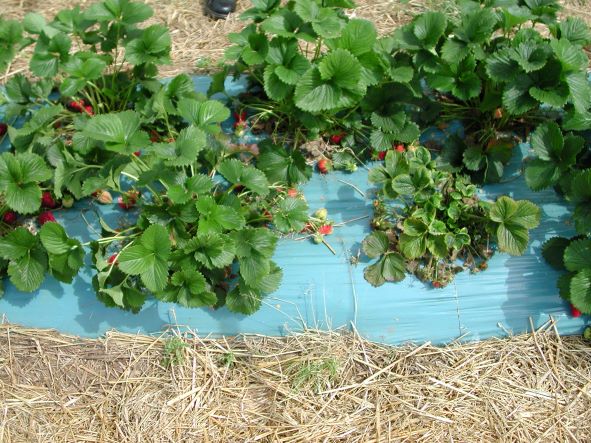Please click here to access the main AHDB website and other sectors.
- Home
- Knowledge library
- Tarsonemid mite on strawberry
Tarsonemid mite on strawberry
Tarsonemid mite (Phytodromus pallidus) has been a pest of commercial strawberry crops for several decades in the UK. It is difficult to eradicate and, in some years and in some crops, damage from the pest can result in economic losses. These pages offer guidance on the biology and control of tarsonemid mite in strawberry.
This information was last updated in 2018.
What are tarsonemid mites?
The mite is small and initially difficult to find but regular crop walking and experience in assessing leaf symptoms will lead to proficient identification of plant damage and the mite itself. It has a very rapid lifecycle in protected polytunnel and glasshouse crops and is believed to be spread by farm staff working in the crop, on farm equipment and as a result of poor hygiene.
It is vital that new crops are established using 'clean' stock and that biologcial control is routinely applied to prevent a build-up of the pest. However, there are some occasions where the pest may still proliferate and additional action may be needed. This is more likely during hot summers in crops under protection. Everbearer varieties tend to be more susceptiblte as the pest has a longer period to produce more generations, although June-bearing varieties are also affected. Crops which are in their second year are at greater risk of financial damage if the pest was present the previous season.
Monitoring and rigorous, systematic checking of plants is essential alongside regular introduction of predatory mites, which should begin before the pest becomes visible.
Action points
- When acquiring new strawberry plants, seek reassurance that stocks are free from the presence of tarsonemid mite before planting.
- Employ trained staff to monitor strawberry plants for the presence of the mite from the start of the growing season onwards.
- Make regular introductions of predatory mites to gain early season control even if tarsonemid cannot be found by visual inspection initially.
- The rates of predator introduction should be governed by population levels of tarsonemid mite.
- Choose crop protection sprays for other pest/disease control programmes which are harmless to the predatory mites.
- Where tarsonemid mite populations reach economically damaging levels a chemical acaricide may be needed which should be chosen in consultation with a BASIS qualified advisor.
Damage, spread and monitoring of tarsonemid mite on strawberry
Find out about the damage caused by this pest and how it spreads. Plus, learn the best ways to monitor your crop to guard against severe damage.
Identification, spread and monitoring
Control of tarsonemid mite on strawberry
Discover the main biological and chemical methods to combat the spread of tarsonemid mite on strawberry crops.
Useful links
Research project: Evaluation of acaricides and adjuvants for strawberry tarsonemid mite control
Research project: Optimising tarsonemid control on strawberry using predatory mites
Download the factsheet on tarsonemid mite in strawberry
Improving integrated pest management in strawberry
Author
The content for these web pages was authored for AHDB by Michelle Fountain and Jerry Cross (NIAB EMR).
 NIAB
NIAB
A strawberry plants severely damaged and stunted by tarsonemid mite infestation
Topics:
Sectors:
Tags:

